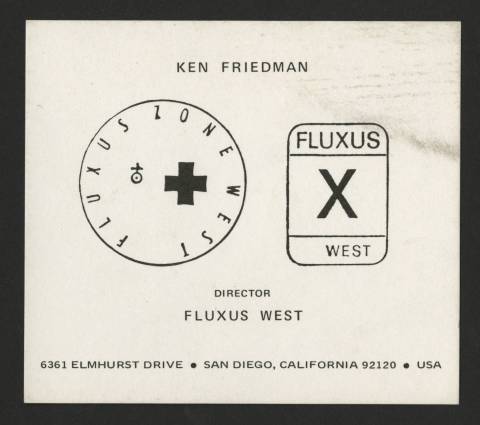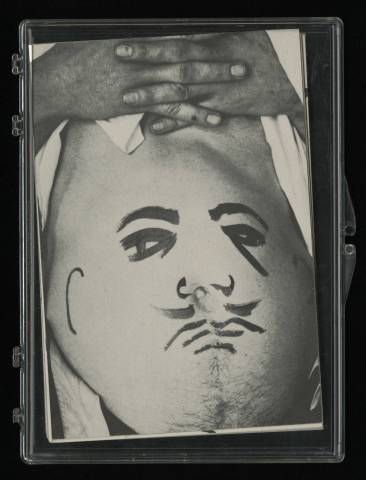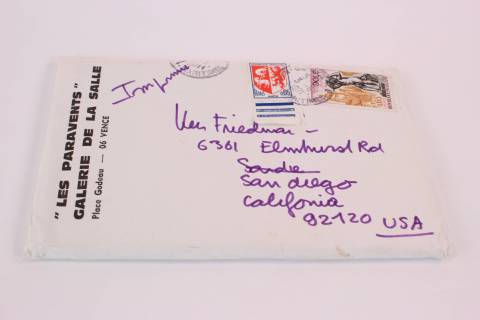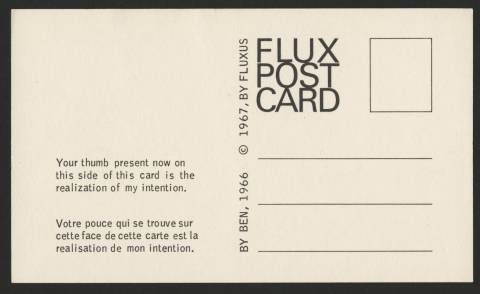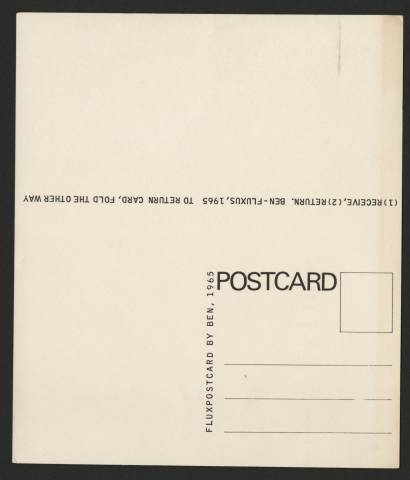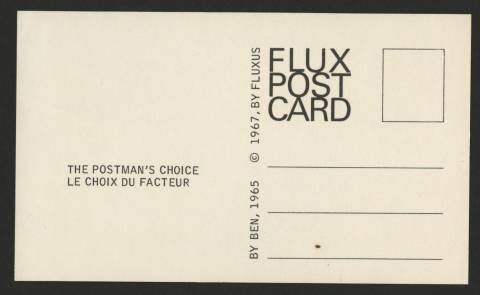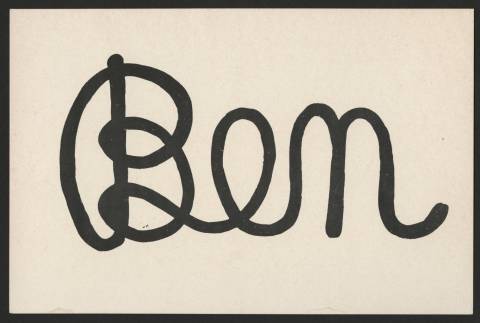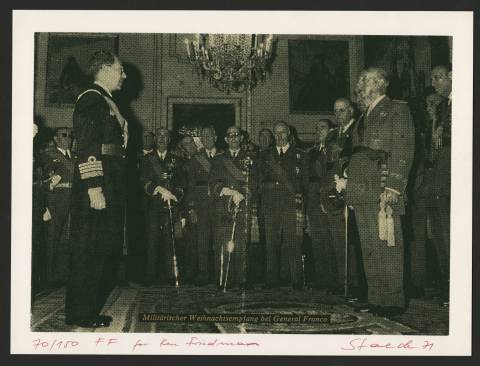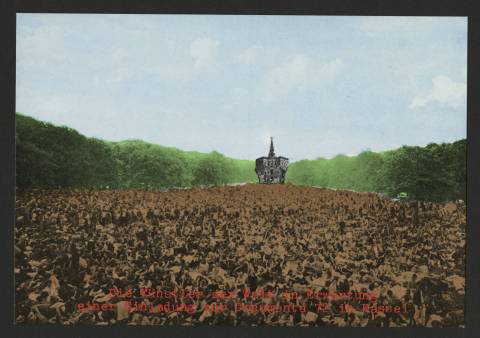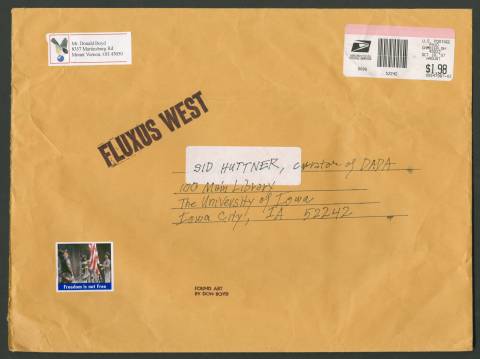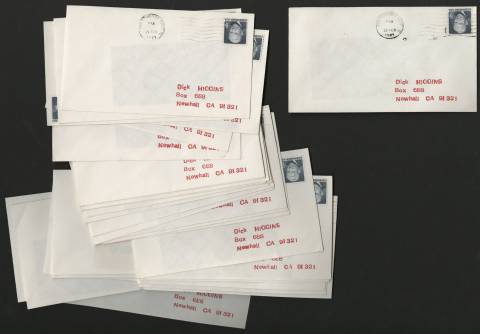LETTERS, POSTAGE, POSTCARDS, handstamps, and postmarks—correspondence between artists, the instruments used to mark their communiqués, even the postal system itself—were seen as essential elements of artistic work and community. Here, we encounter Fluxus’s signature emphasis on process over product, the conflation of art and life, and a preference for ephemeral and affordable materials. Yet we also encounter a preoccupation with networks and their subversive applications. George Brecht and Robert Filliou coined the term “Eternal Network” to describe “an international center of permanent creation” through the post. Fluxus artists played a central role amid a wider network of minimalist, conceptual, pop, and performance artists who adopted a practice sometimes called “correspondence art” or “mail art.” The significance of movement is expressed in other ways. In the mid-1960s, for instance, Ken Friedman had at the behest of George Maciunas become Director of Fluxus West, covering activities in the western United States. Friedman set up centers in San Diego and San Francisco. He later bought a Volkswagen bus and dubbed it the “Fluxmobile,” which Friedman described as a “traveling” exhibition, studio, and publishing house. The Fluxus West postmark is found throughout this collection, and may be traced to Friedman’s prodigious work.

